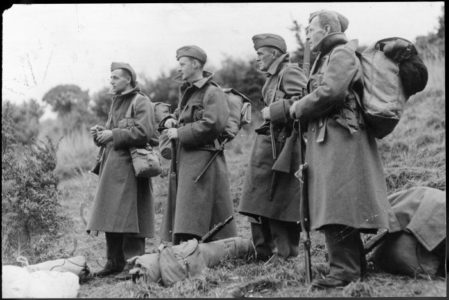The current lockdown imposed in light of the Covid-19 pandemic has drawn parallels with life in east Auckland during the Second World War.
The common thread is one of volunteering for the greater good, and helping out and protecting those most vulnerable.
While we are fighting an invisible war against the virus, in the 1940s people of the area made preparations for invasion by the Japanese.
On June 19, 1940, the SS Niagra set sail for Britain loaded with small arms and ammunition, along with eight tonnes of gold bullion, and was sunk by a German mine placed just north of Auckland.
The Japanese attack on Darwin in 1942, coupled with the sighting of a Japanese Sea Plane over Auckland the same year, and an alleged sighting of a submarine from the Imperial Navy at Maraetai, enhanced the odds for invasion & the reality of war on east Auckland’s doorstep, became omnipresent.

While troops had been dispatched to all corners of Europe in defence of ‘Mother England’, the home fires were kept burning by enthusiastic groups of volunteers.
The New Zealand Home Guard was formed in 1940, in essence, to co-ordinate a military response to the threat of invasion, and was complimented by the Emergency Precautions Scheme, established to handle the civilian population and provide non-military services such as firefighting.
The EPS was also responsible for co-ordinating trial blackouts, whereby lights would be turned off in houses and installations, as well as covering vehicle headlights with black tape. The theory was any invaders would be distracted from shelling an area they assumed was unpopulated.
In his excellent book, Grey’s Folly– A history of Howick, Pakuranga et al, local historian Alan La Roche, tells a story of local boy scouts who were entrusted with delivering messages via bicycle, in the dark, to Howick Town hall, which was serving as a control centre.
La Roche stated ‘this was exciting work, almost as if it came from Boys Own pages, as the messengers were allocated to a particular warden who gave the students messages to take urgently to the Howick Town hall”
The Howick girl guides were also animated participants in the war effort.
In Grey’s Folly, La Roche states that ‘during the war they (the guides) knitted scarves, balaclavas, and socks, raised money, made camouflage nets in the All Saints Church.. and were active in the air-raid precaution exercises.’
The subterfuge continued throughout the war, as did the unwavering efforts of the auxiliary defenders.
In terms of coastal defence the area was well defended by static emplacements. Remnants of pill boxes can still be seen today in Howick Beach, Cockle Bay and Maraetai. A number of tank exercises were conducted around Mellons Bay. According to La Roche; there was also ‘also a gun emplacement on the knoll opposite MacCleans College.’
In the end, the invasion threat from the axis powers never materialised, but the spirit of those east Aucklanders entrusted with keeping people safe, and running society at close to full capacity will never be forgotten.









